2016 Tomato Grow List
Okiedawn OK Zone 7
8 years ago
Featured Answer
Sort by:Oldest
Comments (47)
Macmex
8 years agoMacmex
8 years agoRelated Discussions
2015 Tomato Grow List
Comments (101)Docjoc, Pretty much any bite-sized tomato you choose will grow well here. I don't think I've ever had any tomato plant that produces bite-sized tomatoes not perform well. So, really, it just comes down to taste. Most bite-sized tomatoes are commonly referred to as cherry tomatoes, but there's also grape tomatoes (size and shape of a grape) and currant tomatoes (smaller than cherry or grape types, and normally round in shape). For the typical red cherry tomato, you can't go wrong with Sweet 100, Sweet Million, Large Cherry, or any other red one you see. For a red cherry tomato that tastes not as sweet as the ones listed above and has a flavor that is more like the flavor of a beefsteak tomato, Riesentraube is outstanding. It is a heirloom and not always easy to find, but I think I've seen it in stores some years. For a red grape tomato, there is a variety called Red Grape or sometimes sold simply as "Grape". Other red grape types include Juliet (an AAS winner in 1999) and Jolly (an AAS winner in 2001). For a pink grape tomato, there's Rosalita, which has superb flavor. For a yellow grape tomato, there's Cuban Yellow Grape. There are several yellow cherry tomatoes, and my favorite is Galina's. There's also Snow White and Super Snow White, both of which are more of a pale ivory than a true yellow. For an orange cherry tomato, the standard is SunGold or its improved version with less cracking, which is SunSugar. For a black cherry tomato, you cannot go wrong with Black Cherry, which isn't black at all--it is sort of a deep red-maroon. For a plant that would stay more compact, you cannot go wrong with Cherry Falls or Sweet Baby Girl. There's thousands of tomato varieties available, so I encourage you to try different ones each year until you find the ones you love. Finally, although it is slightly larger than a typical cherry, for a tomato plant that can tolerate the worst summer heat and can handle quite a lot of drought and never stop producing, there's Porter. Sometimes you see it listed as Porter Cherry, Porter Dark Cherry, Porter's Pride or Porter Improved. It produces pinkish tomatoes that are just a bit larger than a standard cherry or grape tomato and are sort of egg-shaped, about 1.5" long and weight 2 or 3 oz. It was developed and sold by the now defunct Gene Porter & Son Seed Company based in Stephenville, TX, so was bred for pretty much exactly the same climate that we have here....See More2016 Tomato Growing Contest ??
Comments (1)Please visit the "Growing Tomatoes" forum to participate in one or all three tomato growing contests. There are 3 contest. Please participate in one or all three contests. 2016 Contest - Dwarf - New Big Dwarf 2016 Contest - Hybrids - Big Beef Hybrid 2016 Contest - Heirlooms - Brandywine Pink Sudduth Strain Please participate and/or visit these three separate threads to learn more about these varieties during the 2016 season!...See More2016 Tomato Growing Contest ??
Comments (3)There are 3 contest threads on the "Growing Tomatoes" Forum for 2016. 2016 Contest Dwarf - New Big Dwarf 2016 Contest Hybrids - Big Beef 2016 Contest Heirlooms - Brandywine Pink Sudduth Strain Please purchase seed and join us for one or all of these threads to learn more about these popular tomato varieties - FYI...See MoreTrade list / wish list/ giveaway list, for Raleigh Fall swap 2016,
Comments (311)My banana is not only doing better but much better! He seems to be extremely happy now! He's got his 7th leaf coming out! (Ignore the boxes. They are critical to maintaining his happiness, I swear!) So spring seems to have come absurdly early. I'm both really excited and enjoying this warmth and really really worried. My peach is blooming 3 weeks earlier than last year. As well as my nectarines. Ralph, remember I had a bunch of baby purple leafed peaches? Well I guess they're old enough to bloom too! Completely unexpected! The ones I potted up but didn't bring to plant swap (potted same time as plant swaps) didn't bloom so I guess they got too much shock from being transplanted, so whoever got them last time it probably won't this year, but next year seems likely! But most worrisome of all... 3 of the 6 blueberries I have are in bud, and one of them has started blooming... I know there are various types that bloom at different times of the year but this seems absurd! Of course after checking out weather for the week looks like we're going to get a frost! Obviously! I just hope I get SOME peaches... :( Anyone know what this is? Its in a few spots of the garden so I think its a pack of bulbs I got and planted and forgot about... but they're anemones right? Just that most of the pictures I looked up have black insides not yellow. In addition to all those... I see that my pink banana (musa velutina) is coming up. My black magic taro, midori taro, black and blue salvia, purple and black salvia, my crinium, all those irises I got from the swap, the canna lilies you gave me Ralph, my candy lily, and my toad lily (which ALSO seems to have spread some! there's a sprout about a foot away from the main body! WHICH IS AWESOME). I'm just worried that some of these are tender and shouldn't be arriving so quickly =___=; Like the taros and bananas... But some like this quince is perfectly fine to bloom now. No fruit expected so go enjoy yourself lil quincey! What sites do you guys use to check for frost? What's your assumed last frost date around here? Do you use the 50% value or wait longer? As for the plant swap coming this spring... (when is it again?) I may have gotten a little excited with seeds: Of the things I should have extras of to bring... some cardoons and artichokes (started in beginning of January so would be nice and ready for spring), some edible hibiscus (Roselles), cape gooseberries, naranjilla, and maybe some others... have 27 varieties of tomatoes which I need to separate the seedlings for and throw into other pots so we'll see how much space I have for spares :3 Ralph, the coleus you gave me at last swap is doing great btw! I gave him a haircut and making some more cuttings of him... should have some cuttings from various salvias as well (although I'll be honest... I let too many of them sit in tray of water too long and got root rot :( whoops... added a bunch of pebbles/stones to them now so pots sit above the drained out water so hopefully the rest survive .___. ) Also, if there was anything anyone wanted from these seeds https://imgur.com/a/trPlW I can throw in a pot and start for you guys before the next swap :) And Karen, you are right. There has been a lot going on outside, although to be fair right now its getting confused with all this warmth. I do need to get myself some more winter plants though! Like lenten roses. And yes... the greenhouse... I'm debating going halfway and getting a quick cheap(ish) throwup structure to enjoy now and then later getting a fullblown one (...maybe I'll get a different house w/ more land... hahaha.) or just going all out now... I do kinda wanna do everything which tends to be warmer/humid environments but that could get really expensive in winter so still debating on what the focus should be... did you buy a prefabricated one or completely create it yourself? Any recommendations for which sites to look at pre-fab ones?...See Morejohnnycoleman
8 years agochickencoupe
8 years agochickencoupe
8 years agoOkiedawn OK Zone 7
8 years agochickencoupe
8 years agojohnnycoleman
8 years agolast modified: 8 years agoOkiedawn OK Zone 7
8 years agojohnnycoleman
8 years agojohnnycoleman
8 years agosoonergrandmom
8 years agoOkiedawn OK Zone 7
8 years agochickencoupe
8 years agojohnnycoleman
8 years agochickencoupe
8 years agojohnnycoleman
8 years agoOkiedawn OK Zone 7
8 years agojohnnycoleman
8 years agojohnnycoleman
8 years agoOkiedawn OK Zone 7
8 years agoluvncannin
8 years agoAmyinOwasso/zone 6b
8 years agoAmyinOwasso/zone 6b
8 years agojohnnycoleman
8 years agoOkiedawn OK Zone 7
8 years agojohnnycoleman
8 years agoMelissa
8 years agoOkiedawn OK Zone 7
8 years agojohnnycoleman
8 years agoOkiedawn OK Zone 7
8 years agojohnnycoleman
8 years agolast modified: 8 years agochickencoupe
8 years agojohnnycoleman
8 years agolast modified: 8 years agochickencoupe
8 years agoOkiedawn OK Zone 7
8 years agojohnnycoleman
8 years agolast modified: 8 years agoOkiedawn OK Zone 7
8 years agojohnnycoleman
8 years agolast modified: 8 years agoOkiedawn OK Zone 7
8 years agoauthereray
8 years agolast modified: 8 years agoOkiedawn OK Zone 7
8 years agosoonergrandmom
8 years agoauthereray
8 years agoOkiedawn OK Zone 7
8 years agoauthereray
8 years ago
Related Stories

EDIBLE GARDENSSummer Crops: How to Grow Tomatoes
Plant tomato seedlings in spring for one of the best tastes of summer, fresh from your backyard
Full Story
MOST POPULARSummer Crops: How to Grow Sunflowers
Savor snack-tastic sunflower seeds once the radiant blooms have faded — if the birds have saved you any, that is
Full Story
SPRING GARDENINGSummer Crops: How to Grow Strawberries
Pluck your own sweet strawberries right from the garden vine for smoothies, salads or eating then and there
Full Story
EDIBLE GARDENSHow to Grow Your Own Sweet Summer Crops
This guide will help any gardener get started on growing the freshest warm-season veggies and berries for summer
Full Story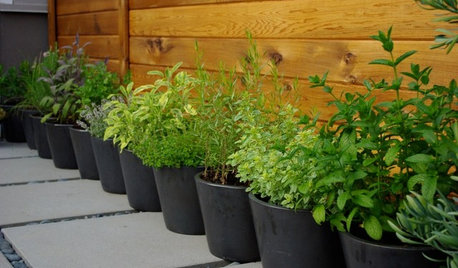
GARDENING GUIDES6 Ways to Grow Edibles in Small Places
No big backyard? Join in the grow-your-own fun with these small-space ideas for planting vegetables, fruits and herbs
Full Story
SUMMER GARDENINGHow to Grow Basil
Bright color, quick growth and endless uses for cooking make this summer annual a winner in the garden or a pot
Full Story
FARM YOUR YARD10 Easy Edibles to Grow in Containers
These herbs, vegetables and fruits are just as happy in a pot as they are in the ground
Full Story
EDIBLE GARDENSSummer Crops: How to Grow Squash
Almost foolproof and with cheerful flowers, squash comes in a wide range of varieties to plant in spring
Full Story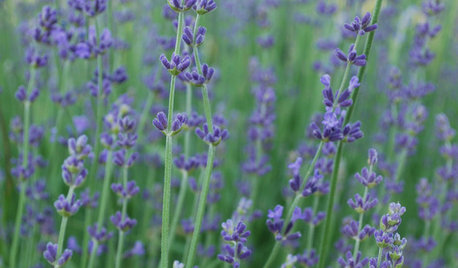
EDIBLE GARDENSHow to Grow Your Own Cocktail Garden
Conceivably, anything edible could find its way into a cocktail. Why not make the route rather short?
Full Story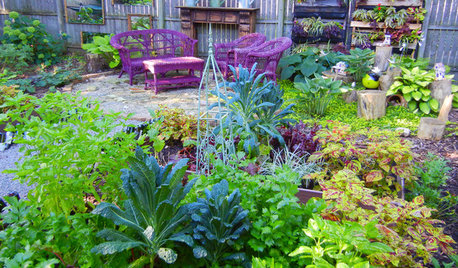
GARDENING GUIDESShades of Vegetable Gardens: Growing Edibles in Less Sun
See how one gardener produces a veritable feast of vegetables and herbs under a canopy of shade
Full Story


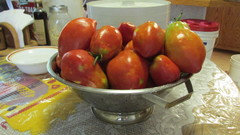


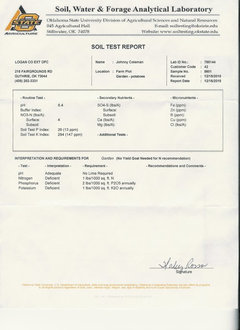
Okiedawn OK Zone 7Original Author